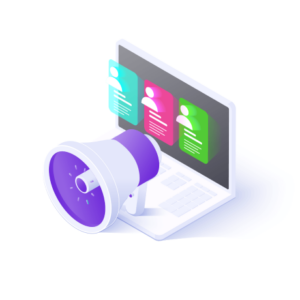We know what it takes to motivate

Sales Team Motivation
Inspire your sales team to stay motivated with a variety of proven sales incentives, rewards, goal setting and training solutions.

Employee Engagement
Create a powerful employee recognition and rewards program that inspires your employees to love what they do and the brand they do it for.

Channel Sales Solutions
Let’s build strong, lasting channel partner relationships to support incremental sales, ongoing engagement and loyalty to your brand.

Customer Loyalty
Discover ways to sustain meaningful relationships with the customers who actively make your brand a part of their lives.
Inspire your sales teams, employees, channel partners and customers.
We help Fortune 500 companies achieve their business goals. Learn more about how we drive results for the largest organizations across the globe.

The data is clear
83
BIW’s Net Promoter Score: world class, according to Bain & Company
9.7M
participants inspired to change their behavior
18
global offices, supporting participants in 183 countries

WHO WE SERVE
Delivering inspiration across industries
Our expertise means we understand the nuances of your business to design the solutions that resonate and drive results.
Who is BI Worldwide?
We turn inspiration into results
A moment of inspiration can make a day, spark an idea, solve a problem and change a perspective. BI WORLDWIDE uses inspiration to motivate your people to think boldly take risks, and seize opportunity to transform your business.

Expertise from our brightest minds
-
Article
Retail sales incentive
Once upon a time in the heart of a bustling metropolis, there stood a branch of a thriving retail store named “Bright Ideas.” Across the country, the store was known for its friendly staff, quality products and vibrant atmosphere. Behind the scenes at the corporate office, the store’s CEO, Ms. Diaz, was brainstorming ways to […]
-
Article
10 key strategies for running successful channel partner programs
Channel programs are integral to the success of many businesses, allowing them to reach broader markets and enhance brand visibility. Incentivizing channel partners further amplifies these efforts, motivating them to drive sales, promote products and foster long-term partnerships. However, the effectiveness of a channel program incentive hinges on careful planning, execution and management. Here are […]
-
Article
Is cash king?
Do cash incentives work better than non-cash incentives? On the surface it’s a relatively simple, straightforward question but in truth, it’s one of the great debates in the field of sales compensation programs — and one that requires a remarkably complex and nuanced answer. We recently hosted a webinar on this cash vs. non-cash topic featuring Professor […]
Awards
Award-winning work honored by industry experts.
An unbeatable collection of merchandise, once-in-a-lifetime experiences, travel, and personal enrichment.

2
Emmy Awards

6
Telly Awards

